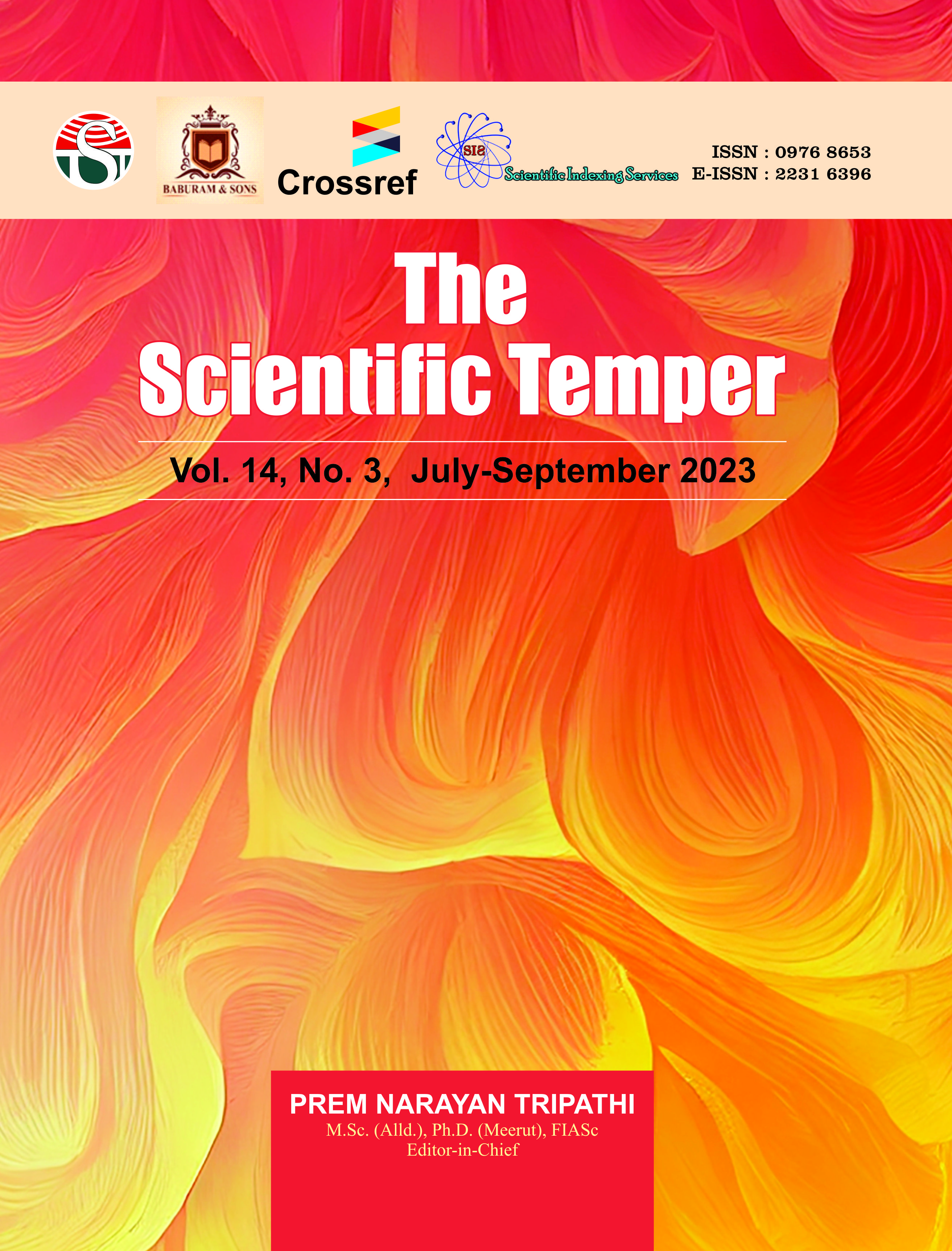Research on the current situation and influencing factors of college students learning engagement in a blended teaching environment
Downloads
Published
DOI:
https://doi.org/10.58414/SCIENTIFICTEMPER.2023.14.3.02Keywords:
Bended learning, Learning engagement, Teaching interaction theory.Dimensions Badge
Issue
Section
License
Copyright (c) 2023 The Scientific Temper

This work is licensed under a Creative Commons Attribution-NonCommercial-ShareAlike 4.0 International License.
Taking students from a university who participate in blended teaching of innovation and entrepreneurship as the research object, a model of the influencing factors of college students’ learning engagement in a blended teaching environment was constructed. This paper constructs a model of influencing factors of college students’ learning engagement in the blended teaching environment. The results showed that individual, teacher, and peer factors all have a certain degree of influence on learning engagement, but the degree of influence is significantly different. Teacher factors have the greatest impact, followed by individual factors, and peer factors have the smallest impact; Environmental factors have a moderating effect on the relationship between individual factors, teacher factors, peer factors, and learning engagement, but the direction of action is not consistent. The positive effect of individual factors, teacher factors, and peer factors on learning engagement increases with the increase of environmental factors, while the positive effect of teacher factors and peer factors on learning engagement weakens with the increase of environmental factorsAbstract
How to Cite
Downloads
Similar Articles
- Anilkumar K. Varsat, Sociolinguistics competence development in the ESL classroom: Challenges and opportunities , The Scientific Temper: Vol. 15 No. spl-2 (2024): The Scientific Temper
- Priyanka Patel, Bhaskar Pandya, The idea of Indianness in Indian literature: An analysis of social and cultural themes in the short stories of Rabindranath Tagore, Mulk Raj Anand, and R.K. Narayan , The Scientific Temper: Vol. 16 No. Spl-1 (2025): The Scientific Temper
- Gulshan Makkad, Lalsingh Khalsa, Vinod Varghese, Fractional thermoviscoelastic damping response in a non-simple micro-beam via DPL and KG nonlocality effect , The Scientific Temper: Vol. 16 No. 04 (2025): The Scientific Temper
- Kunal Lanjekar, Prashant Kalshetti, Joe C. Lopez, Role of social media in lead generation , The Scientific Temper: Vol. 14 No. 04 (2023): The Scientific Temper
- Birhanu T Sisay, Jadu K. Agerchu, Gizachew W. Nuraga, Effects of bended NPSB fertilizer rates and varieties on growth and yield of garlic (Allium sativum L.) in Gummer district, Central Ethiopia , The Scientific Temper: Vol. 14 No. 04 (2023): The Scientific Temper
- Anil Kumar, Aditya Kumar, Synthesis, spectral characterization and antimicrobial effect of Cu(II) complexes of schiff Base Ligand, N-(3,4- dimethoxybenzylidene)-3-aminopyridine (DMBAP) Derived from 3,4-dimethoxybenzaldehyde and 3-aminopyridine , The Scientific Temper: Vol. 14 No. 01 (2023): The Scientific Temper
- Ashoke D. Maliki, Taiwo A. Muritala, Saji George, Frank A. Ogedengbe, Impact of project financiers’ strategies on de-risking infrastructural projects: A conceptual review , The Scientific Temper: Vol. 14 No. 04 (2023): The Scientific Temper
- K. Sreenivasulu, Sampath S, Arepalli Gopi, Deepak Kartikey, S. Bharathidasan, Neelam Labhade Kumar, Advancing device and network security for enhanced privacy , The Scientific Temper: Vol. 14 No. 04 (2023): The Scientific Temper
- Shaik Abdulla P., Abdul Razak T., Retrieval-Based Inception V3-Net Algorithm and Invariant Data Classification using Enhanced Deep Belief Networks for Content-Based Image Retrieval , The Scientific Temper: Vol. 15 No. spl-1 (2024): The Scientific Temper
- Saba Naaz, K.B. Shiva Kumar, Integrated deep learning classification of Mudras of Bharatanatyam: A case of hand gesture recognition , The Scientific Temper: Vol. 14 No. 04 (2023): The Scientific Temper
<< < 6 7 8 9 10 11 12 13 14 15 > >>
You may also start an advanced similarity search for this article.



